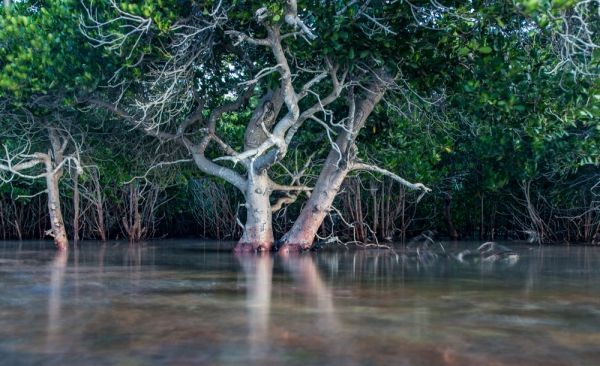It’s no secret that the forests of the world are under severe pressure from human activities. We tend to think of tropical forests, and in particular the Amazon, as bearing the brunt of the impacts of deforestation and other drivers of forest clearance. While tropical forests are faring badly, there is another forest type that has been subject to more degradation and destruction than any forest type on Earth over the last 50 years: mangrove forests.
The level of destruction has been staggering. Since 1980 alone more than 20% of the world’s mangrove forests have been cleared, according to the Food and Agriculture Organization of the United Nations. Less than half the Earth’s original mangrove forest cover remains.
An incredible group of species, mangroves obtain fresh water from salt water, enabling them to thrive in harsh and unstable coastal habitats. They do this by either secreting salt through their leaves or, in some cases, blocking the absorption of salt at their roots.
Mangroves perform incredibly important ecological functions. They provide nursery areas for juveniles of thousands of fish, crustacean and mollusc species. In some places, their dense root and branch systems play a key role in coastal protection, acting as a crucial barrier against storm surges, flooding and erosion, which will pose a growing threat as climate change worsens. Their thick, tangled root systems also encourage the deposition of nutrient-rich sediments from rivers, trapping these before they reach the ocean and smother other important habitats, such as coral reefs.
Continue reading at Fauna & Flora International
Image via Fauna & Flora International


